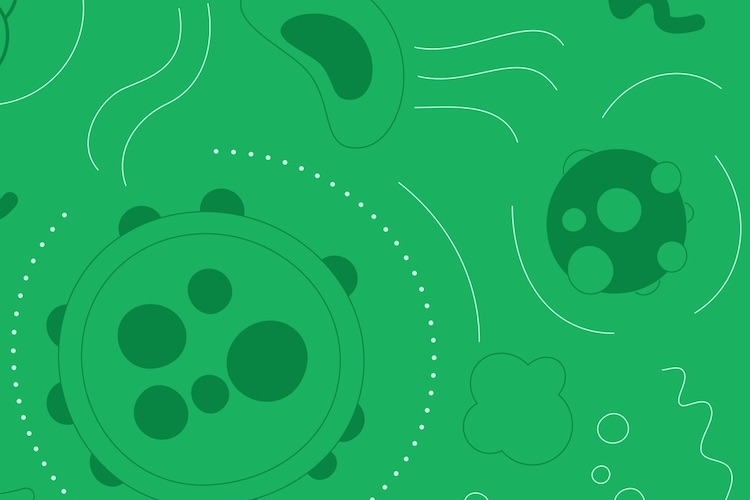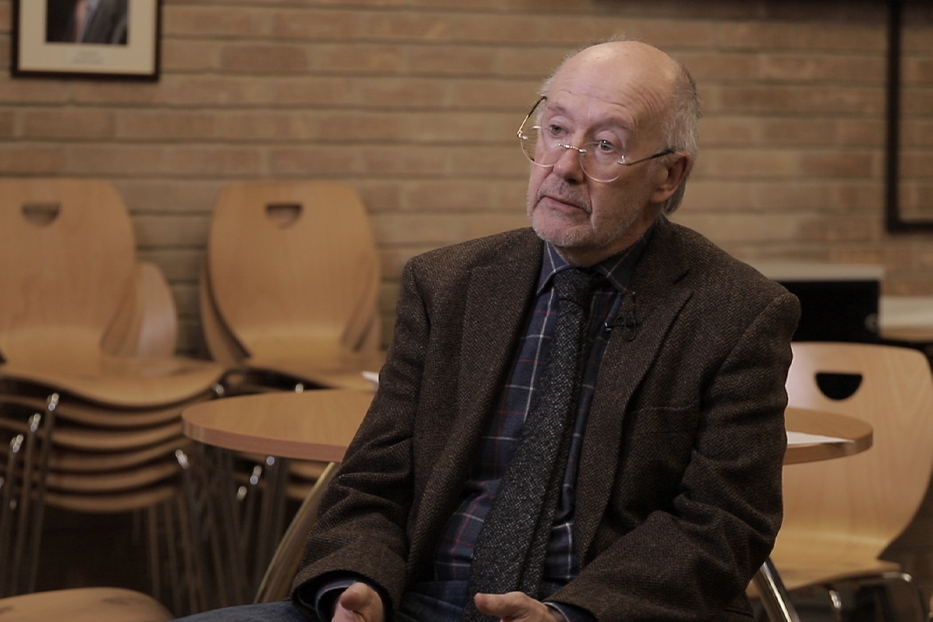Protecting Chickens and People from Avian Influenza Viruses
New effective H7N9 and H5N1 vaccines will help to control the spread of viruses in avian species and, thus, to avoid cross-species transmission to humans
news | June 11, 2015

On April 29, 2015, the Journal of Virology published a paper titled “Newcastle disease virus-vectored H7 and H5 live vaccines protect chickens from challenge with H7N9 or H5N1 avian influenza viruses” about new vaccines that protect chickens and thus people from avian influenza viruses. We have asked one of the authors of this research, Dr. Juergen Richt from Kansas State University, to comment on this work.
The Study
A new H7N9 virus has emerged over a large geographic region in China, infecting millions of chickens, as well as posing the danger of sporadic human infections. The H5N1 virus has spread from Asia to Europe and Africa resulting in millions of lethal poultry infections and many human deaths. Our work has demonstrated that when the H7 and H5 influenza proteins are delivered to poultry with a recombinant Newcastle Disease virus (NDV) vaccine, chickens are completely protected from both H7N9 and the highly pathogenic H5N1 viruses, respectively. In addition, chicken develop high hemagglutination inhibition antibodies against NDV, suggesting that protection is also achieved against infection with virulent NDV isolates. Effective H7N9 and H5N1 vaccines will help to control the spread of these viruses in avian species and to avoid cross-species transmission to humans.
Background

The rationale for using the Newcastle Disease vaccine virus “LaSota” as the backbone for our virus vector is that this NDV strain is used as an efficacious attenuated live virus vaccine for Newcastle Disease – a highly contagious bird disease that can infect more than 250 species of birds. The NDV LaSota strain has been shown by our collaborator Dr. Adolfo García-Sastre from the Icahn School of Medicine at Mount Sinai to be a good vaccine vector in which various foreign proteins can be expressed.
Future Direction
Highly pathogenic avian influenza (HPAI) H5N8 virus originating from Eurasia was recently introduced into North America via the Pacific flyway. Mixing with North American low pathogenicity avian influenza viruses occurred, generating newly reassortant H5N8, H5N2 and H5N1 (so called H5Nx) viruses. To date, the H5Nx viruses have been detected in the Pacific, Central and Mississippi flyways. Both, the H5N8 and the H5N2 viruses have been implicated in recent poultry outbreaks which resulted in the culling of millions of chickens and turkeys in the Midwest. All viruses detected to date have the H5 hemagglutinin (HA) gene derived from the H5 clade 2.3.4.4. Since the NDV-H5 construct used for the above described studies was derived from an Indonesian H5N1 virus (belonging to the H5 clade 2.1.3.2), it is possible that only limited cross-protection will be provided against the H5Nx viruses circulating in the U.S. (belonging to clade 2.3.4.4). In order to produce a vaccine for the U.S. poultry industry, we are in the process of developing a NDV-vectored vaccine which will contain a HA gene derived from an H5N2 virus isolated from U.S. poultry. We will also perform efficacy tests using this novel NDV-H5 vaccine and a highly pathogenic H5N2 challenge virus.
Additional studies have been performed using NDV “LaSota” as a vector to deliver antigens to mammalian species. In this context, NDV was used to deliver the swine influenza H3 hemagglutinin into pigs. Pigs immunized with a NDV-H3 construct were protected from subsequent challenge with a virulent H3N2 swine influenza virus. This suggests that NDV can be also used as a vaccine vector for other pig pathogens and perhaps other mammalian species.It has become essential to license and market a vaccine that can counteract emerging influenza viruses for use in the U.S. with USDA-Center for Veterinary Biologics. Vaccination offers the most realistic and cost effective tool to prevent future infections of domestic poultry and indirectly to protect human health. To achieve this goal we work together with Avimex, a Mexican veterinary company and leader in the poultry vaccine market in Mexico, which owns exclusive rights and licensure to the NDV-vectored technology for veterinary use obtained from the Icahn School of Medicine at Mount Sinai.
Finally, it is essential to give a high priority to both the necessary basic research and the application of that basic research to prevent human and animal disease. Those of us doing research in emerging zoonotic animal and human viruses have a strong case to seek adequate funding and must apply ourselves diligently to one of the great problems confronting humanity in this century. Such a claim might appear grandiose, but if our work prevents both extensive animal disease and a human influenza pandemic, our determination will be justified.
If you would like to contribute your own research, please contact us at [email protected]






























